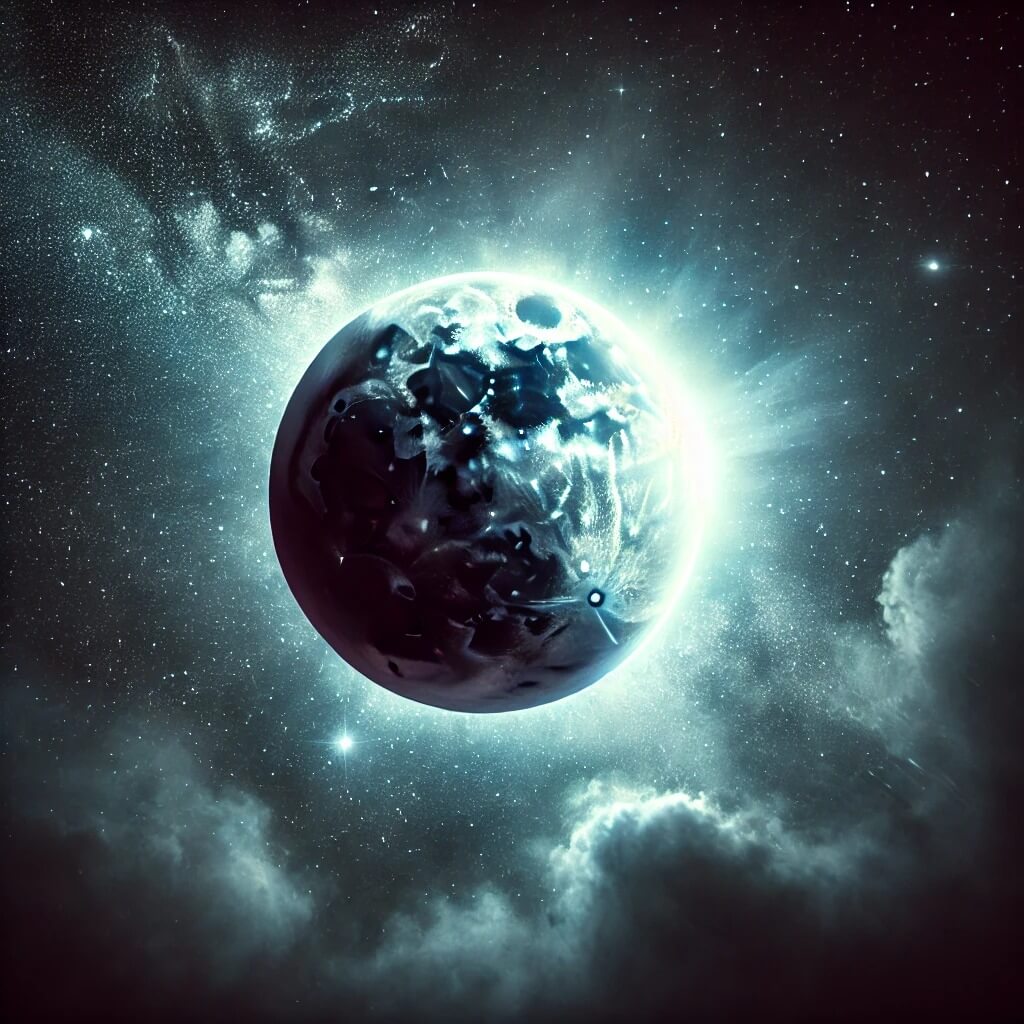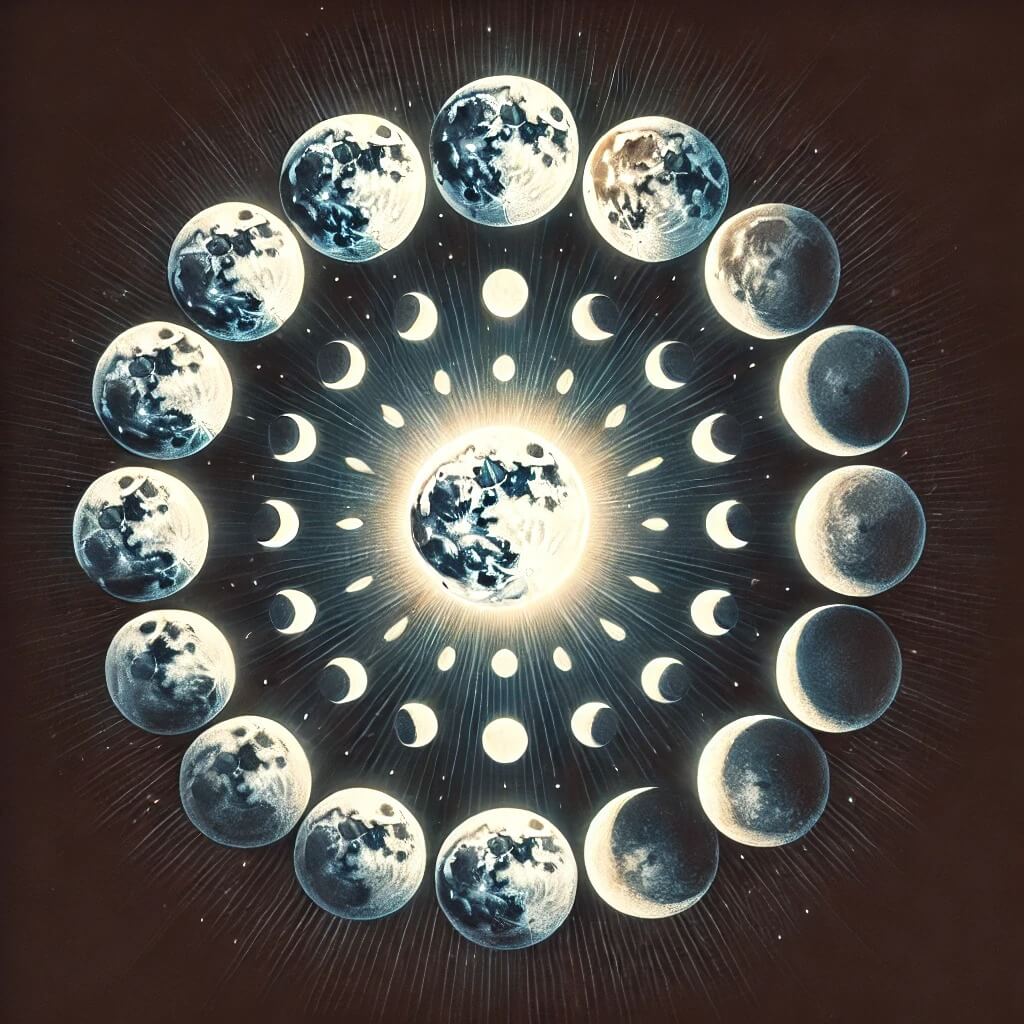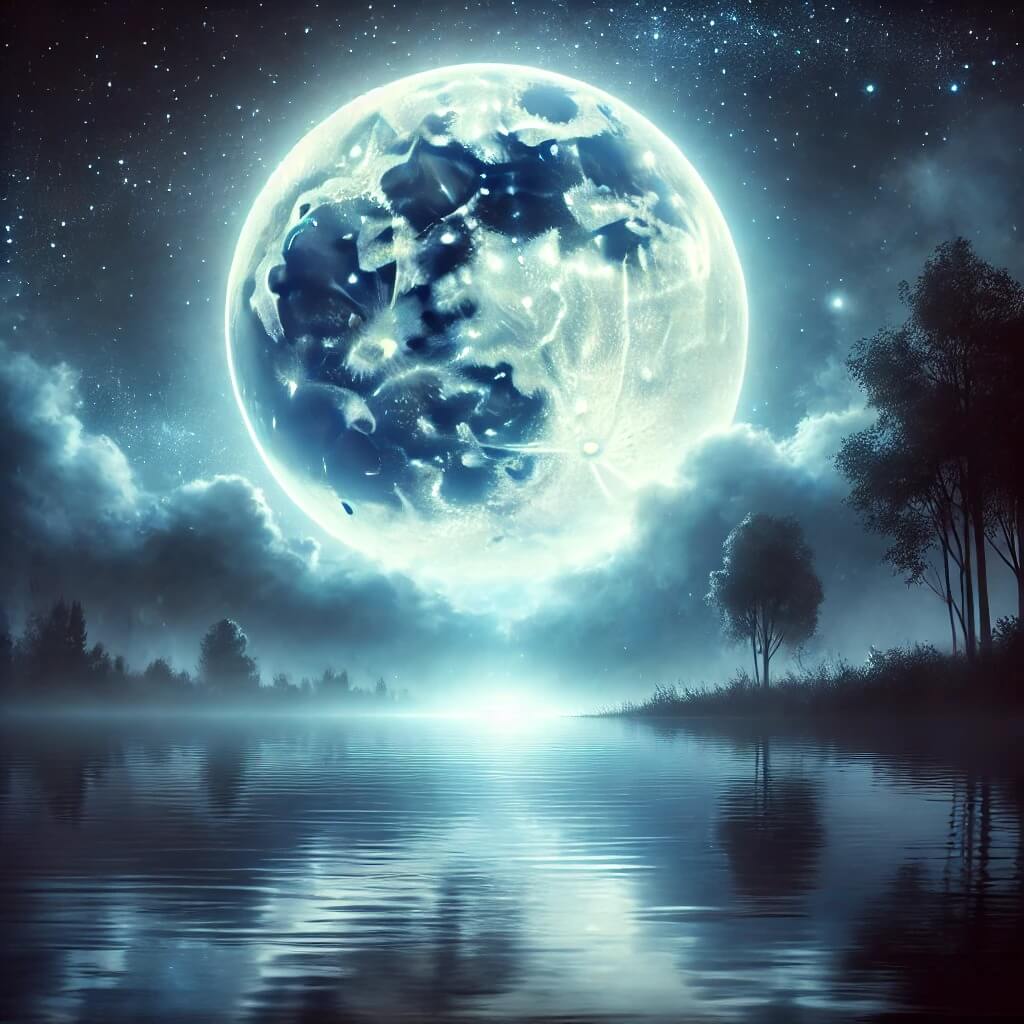The Moon has been a source of wonder and inspiration for humanity since the dawn of time. Its ever-changing phases and the gentle light it casts upon the Earth have made it a symbol of mystery, femininity, and the cyclical nature of life. Unlike the sun, which dominates the sky with its steady brilliance, the Moon’s subtle presence invites introspection, reflection, and a connection to the inner self.
Throughout history, the Moon has been revered in numerous cultures and religions as a powerful symbol, often associated with the divine feminine. In many ancient myths and spiritual traditions, the Moon is seen as a guiding force, influencing not only the tides of the oceans but also the rhythms of life itself. Its waxing and waning are mirrored in the cycles of growth and decay, birth and death, making the Moon a potent emblem of life’s constant flux.
From the goddesses of ancient Greece and Rome to the lunar deities of Eastern mythology, the Moon has been personified and worshipped across the world. Its influence can be seen in everything from agricultural calendars to religious ceremonies, where the Moon’s phases dictate the timing of important rituals. Even in modern times, the Moon continues to captivate, featuring prominently in literature, art, and popular culture as a symbol of romance, mystery, and the unknown.
In this article, we will explore the rich symbolism of the Moon, delving into its significance in various cultures, its connection to feminine energy, and the way its phases have been interpreted as markers of spiritual and emotional journeys. We will also reflect on how the Moon’s symbolism continues to resonate in contemporary spirituality, offering guidance and inspiration in our daily lives.
The Moon in Mythology and Religion

The Moon’s symbolism transcends cultures and religions, serving as a powerful emblem in various mythologies around the world. From ancient civilizations to indigenous traditions, the Moon has been venerated as a deity, a guide, and a symbol of the profound mysteries of life. Its presence in the night sky has inspired countless stories, rituals, and beliefs, each reflecting the unique ways in which different cultures have connected with this celestial body.
-
Ancient Greek and Roman Mythology
In the ancient Greek and Roman pantheons, the Moon was personified by several deities, each embodying different aspects of its symbolism:
- Selene: Often depicted driving a chariot across the night sky, Selene was revered as the goddess of the Moon, embodying its serene beauty and role as a guardian of the night.
- Artemis (Diana in Roman mythology): As a lunar goddess, Artemis represented the Moon’s connection to wisdom, intuition, and the natural world. Known as the goddess of the hunt, she was associated with the wild and untamed, her influence extending to the cycles of nature and the rhythms of life.
-
Eastern Mythology
In Eastern traditions, the Moon holds a central place in cultural and spiritual practices:
- Chinese Culture: The Moon is integral to the Mid-Autumn Festival, a time of reunion and reflection. The festival celebrates the Moon’s fullness and brightness, symbolizing harmony and the unity of families. The goddess Chang’e, who is said to live on the Moon, embodies its grace and elegance. Her story, filled with themes of love, loss, and immortality, highlights the Moon’s role as a symbol of the eternal and the cyclical nature of life.
- Hinduism: The Moon, known as Chandra, is considered one of the most important celestial bodies. Chandra is not only a god but also a marker of time, influencing the phases of the Moon that guide various religious practices. Chandra’s influence extends to the physical and emotional well-being of individuals, reflecting the Moon’s broader role as a symbol of both cosmic order and personal harmony.
-
Native American Beliefs
For many Native American tribes, the Moon is a guide and protector:
- The Moon’s cycles dictate the timing of agricultural activities and ceremonial practices, featuring prominently in their lunar calendars used to track the changing seasons and plan important events.
- The Moon is seen as a nurturing force that watches over the natural world, with its phases symbolizing the ongoing relationship between humans and the environment, reflecting a deep understanding of the interconnectedness of all life.
Phases of the Moon and Their Symbolic Meanings
The phases of the Moon have long been associated with various symbolic meanings, reflecting the natural rhythms of life. Each phase represents a different stage in the cycle of growth, transformation, and introspection, offering guidance and insight for those attuned to its energy.
-
New Moon
The New Moon symbolizes new beginnings and is a time for setting intentions. It marks the start of a new cycle, offering a fresh slate and the opportunity to plant the seeds of future goals and desires.
-
Waxing Moon
The Waxing Moon represents growth and creativity. As the Moon’s light increases, it is a time for manifesting goals and dreams, building momentum, and nurturing the ideas and plans set during the New Moon.
-
Full Moon
The Full Moon is the peak of energy and power. It is associated with completion, enlightenment, and the culmination of efforts. During this phase, the intentions and goals set earlier in the cycle come to fruition, providing clarity and insight.
-
Waning Moon
The Waning Moon signifies a period of release, letting go, and introspection. As the Moon’s light diminishes, it encourages inward reflection, allowing for the release of anything that no longer serves, making space for renewal in the next cycle.
The Moon and Feminine Energy
The Moon has long been associated with the divine feminine, symbolizing fertility, motherhood, and intuition. Across various cultures, the Moon is revered as a reflection of the cyclical nature of women’s lives, mirroring the phases of the female reproductive cycle. Just as the Moon waxes and wanes, women experience their own rhythms of growth, change, and renewal. The connection between the Moon and the feminine is often seen in myths and spiritual practices, where the Moon embodies the nurturing and intuitive qualities traditionally linked to womanhood. This deep bond highlights the Moon’s role as a symbol of life’s ebb and flow, resonating with the emotional and physical stages of women’s lives.
The Moon and Emotions

The belief that the Moon influences human emotions is deeply rooted in both astrology and folklore. Throughout history, the Moon has been thought to affect mood, behavior, and personality traits, its phases acting as a mirror to the inner self. In literature and art, the Moon is often depicted as a symbol of the subconscious mind, reflecting the hidden aspects of our psyche and the emotions that reside beneath the surface. The waxing and waning of the Moon are seen as metaphors for the emotional tides within us, guiding our feelings and responses to the world around us. This connection between the Moon and emotions underscores its symbolic power as a celestial body that not only lights up the night but also illuminates the depths of our inner world.
Cultural Symbolism of the Moon
The Moon has been a powerful symbol in various aspects of culture, from art and literature to modern media and popular culture. Its presence in these realms reflects the deep and enduring fascination that humanity has with this celestial body, symbolizing everything from mystery and romance to exploration and discovery.
-
The Moon in Art and Literature
The Moon has inspired countless works of art and literature, often serving as a muse for romanticism and a symbol of the unknown. In poetry, the Moon is frequently depicted as a solitary companion in the night, a symbol of longing, reflection, and the passage of time. Artists have captured the Moon’s ethereal beauty in various forms, from luminous paintings to intricate sculptures, each piece attempting to convey its mystical allure. The Moon’s association with the night and the subconscious has also made it a potent symbol in gothic and surrealist art, where it often represents the dreamlike and the uncanny.
-
The Moon in Modern Culture
In contemporary times, the Moon continues to captivate through films, popular media, and ongoing interest in lunar exploration. The Moon has been a central theme in science fiction, representing both the final frontier and the unknown. Movies like “2001: A Space Odyssey” and “Apollo 13” have immortalized the Moon as a symbol of human ambition, adventure, and the quest for knowledge. The fascination with lunar exploration, sparked by the historic Apollo missions, has kept the Moon in the public consciousness, symbolizing not just scientific achievement but also the enduring human spirit to explore and understand the universe.
Beyond science fiction, the Moon’s presence in music, fashion, and even branding continues to influence modern culture. Songs and albums inspired by the Moon often evoke feelings of mystery, romance, and introspection, while fashion designers use the Moon’s imagery to create designs that are both ethereal and timeless. In branding, the Moon is often used to symbolize innovation, calmness, and reliability, further cementing its place in modern cultural symbolism.
The Dark Side of the Moon
The Moon’s hidden side, often referred to as the dark side, has long been associated with the subconscious and the shadow self. This mysterious aspect of the Moon symbolizes the unknown and unexplored territories of the human psyche. The dark side of the Moon is not visible from Earth, which has led to its representation as the hidden, repressed parts of ourselves—those aspects that lie beneath the surface of consciousness.
Lunar eclipses, where the Earth casts its shadow over the Moon, bring these hidden elements into temporary darkness, symbolizing moments of transformation and revelation. During a lunar eclipse, the usual light of the Moon is obscured, mirroring times in life when we confront the unknown or face profound changes. These events are often viewed as opportunities for deep introspection and personal growth, as the shadow self comes to light and invites us to explore the depths of our inner world.
Lunar Rituals and Practices
From ancient traditions to modern spirituality, lunar rituals have been a powerful way for people to connect with the Moon’s energy. These rituals, which align with the phases of the Moon, offer opportunities to harness its symbolic power for personal and spiritual development. In many cultures, the Full Moon and New Moon are particularly significant, marking times for setting intentions, releasing negativity, and manifesting desires.
In Wiccan ceremonies and other pagan practices, the Moon plays a central role, with rituals often performed under its light to honor its influence on the Earth and its inhabitants. Meditation practices may also incorporate the Moon’s energy, using its phases to guide inner reflection and spiritual growth. Even simple nightly reflections under the Moon’s glow can be a form of lunar ritual, offering a moment of peace and connection with the natural world. The Moon continues to guide and inspire through these practices, serving as a bridge between the cosmic and the personal.
Reflections on the Moon’s Influence
The Moon’s symbolism remains deeply embedded in modern spirituality and everyday life. Its influence on personal growth, creativity, and spiritual practices is timeless, offering a constant source of inspiration and guidance. Whether through its phases, its role in mythology, or its presence in cultural expressions, the Moon continues to resonate with those who seek to connect with its energy. As a symbol of both the known and the unknown, the Moon’s enduring power lies in its ability to reflect the cycles of life and the mysteries of the universe, guiding us on our journeys of self-discovery and transformation.

